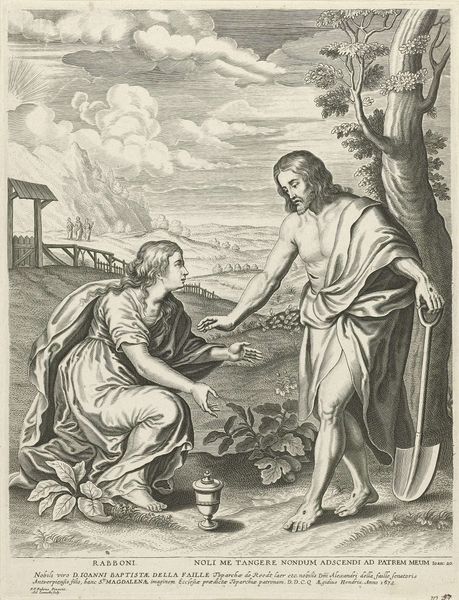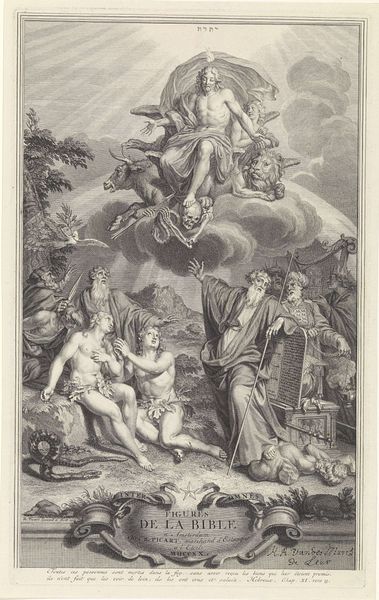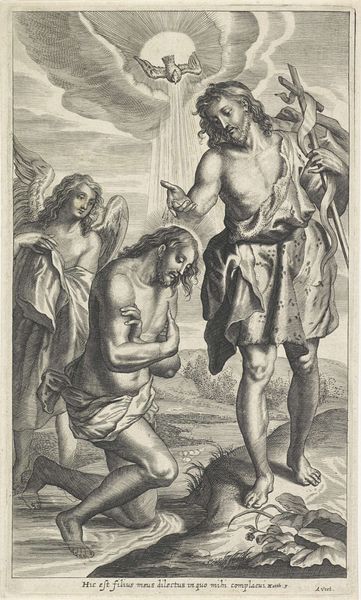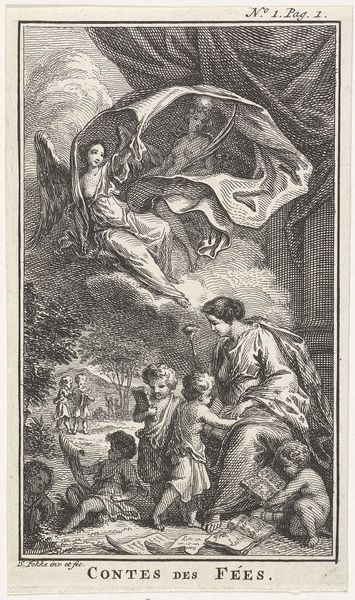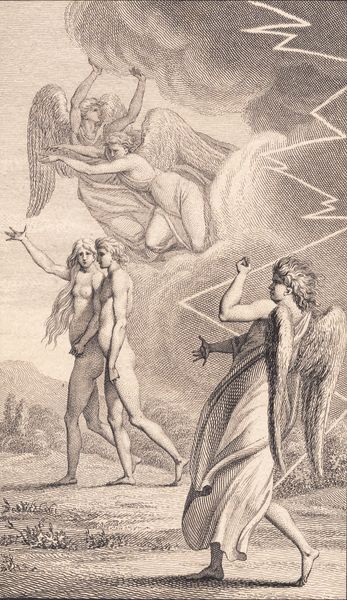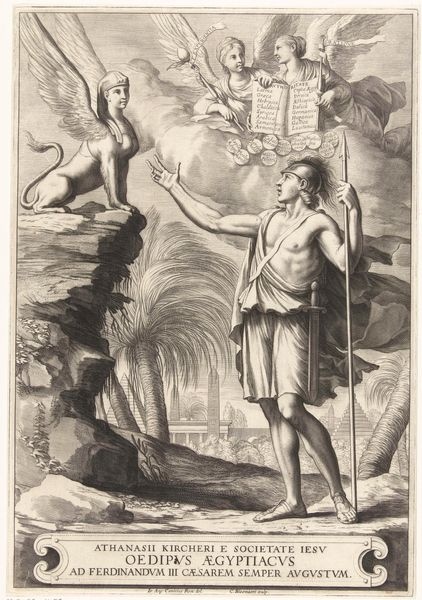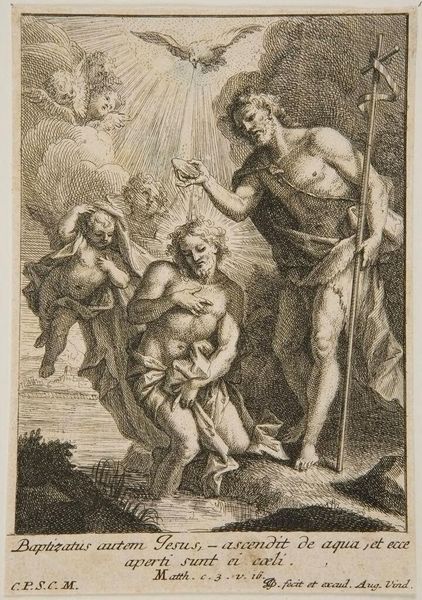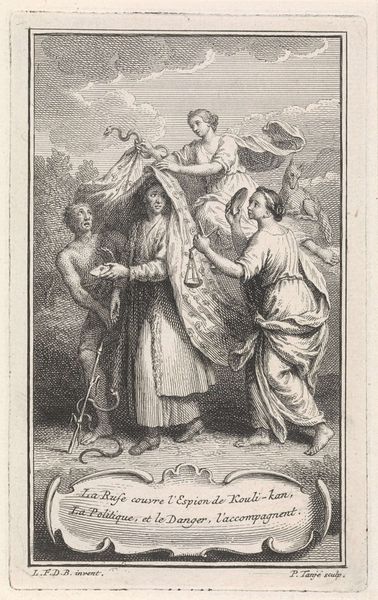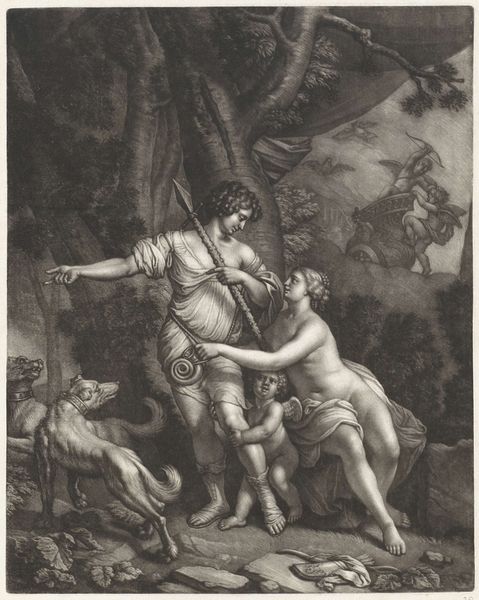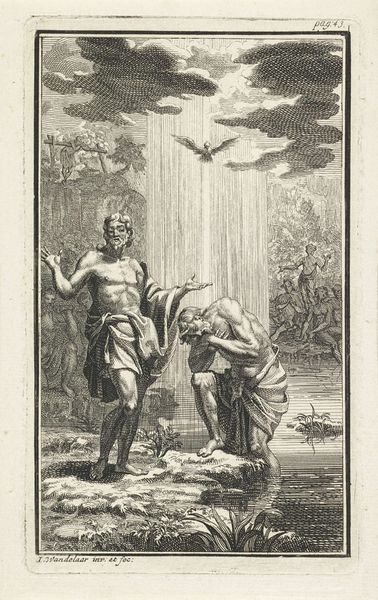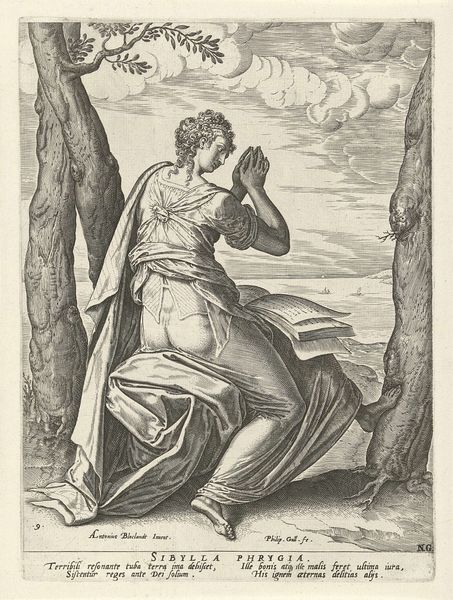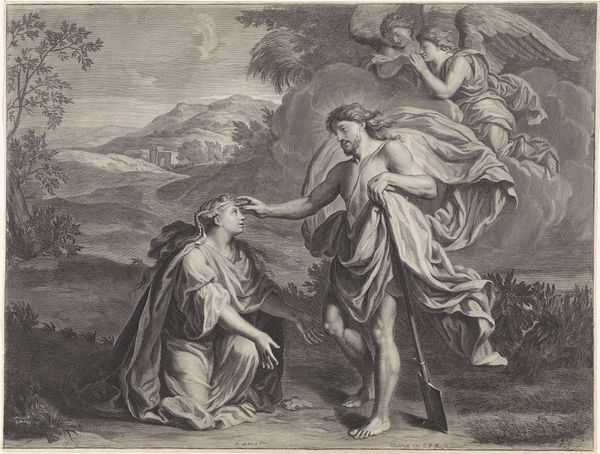
print, engraving
#
baroque
# print
#
landscape
#
figuration
#
history-painting
#
engraving
Dimensions: height 447 mm, width 342 mm
Copyright: Rijks Museum: Open Domain
Curator: Let’s take a closer look at "Baptism of Christ," an engraving crafted sometime between 1630 and 1677, attributed to Adriaen Lommelin and currently held at the Rijksmuseum. Editor: The immediate feeling is one of solemnity, the delicate lines create a very still and thoughtful moment. The composition, though, seems quite active with that dynamic sky! Curator: Indeed. This piece exemplifies the Baroque style, a period known for its dramatic use of light and shadow, intended to evoke emotional responses. The iconography is powerful – observe how the dove, symbolizing the Holy Spirit, descends amidst rays of light as John baptizes Jesus. Editor: It’s fascinating how this imagery reinforces the narratives of power. Consider John’s raised arm, actively dominating Jesus as the water pours down—an imposition, physically embodying the established patriarchal religious structure and its control. The body of Jesus seems subordinate here. Curator: Yes, but also, think of the landscape tradition here, not just the act of baptism, which has been a recurrent subject of European painting. The river isn't just water; it suggests purification, spiritual cleansing, rebirth. Even the tree serves a symbolic purpose. Editor: Absolutely. In terms of its placement, and the historical moment it captures, one can think about the construction of sanctity and the body's involvement with larger issues like reform. This print highlights the performative aspect of religious rituals. How these printed images also were easily disseminated… the original social media of the time, no? Curator: Exactly, distributing such symbolic representation would have played a critical role in Baroque society. A deeply compelling narrative etched in lines and infused with multilayered meanings. Editor: The dialogue between the physical and the spiritual leaves me with questions of how one might resist oppressive narratives like this—not as a believer, but as a person questioning established hierarchies. Curator: Well said, it makes you contemplate the enduring power of symbols, and their ever-evolving relevance in contemporary times.
Comments
No comments
Be the first to comment and join the conversation on the ultimate creative platform.
